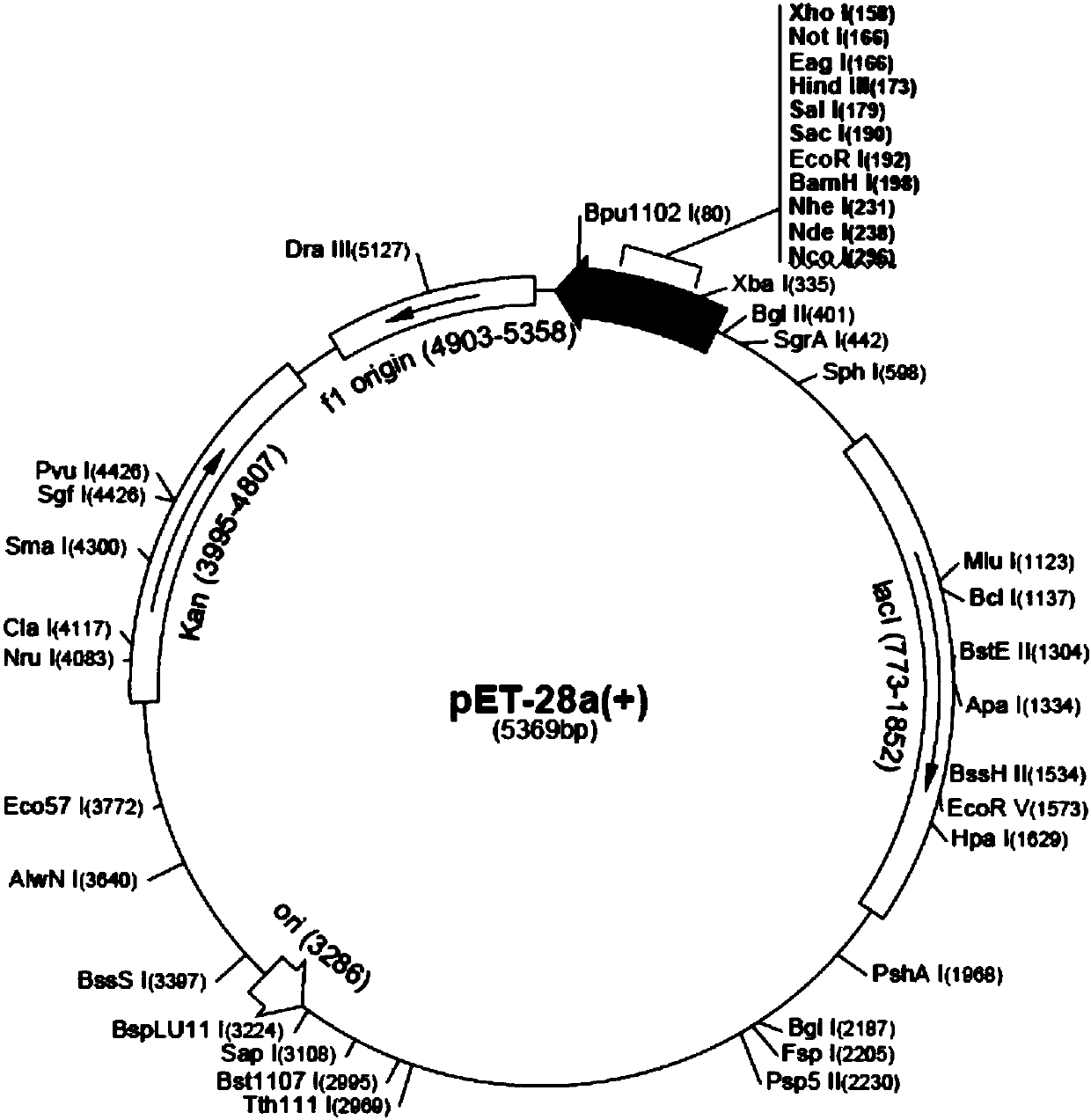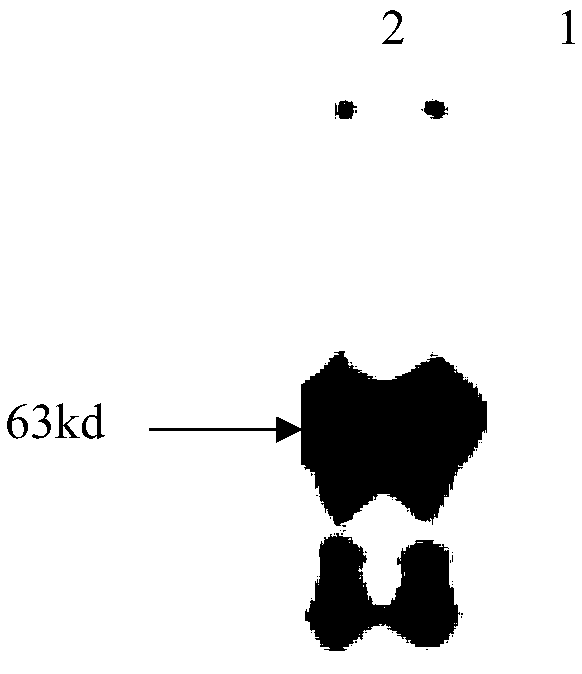Anti-peste des petits ruminants virus N protein monoclonal antibody and application thereof
A technology of Peste des petits ruminants and monoclonal antibodies, applied in the direction of antiviral immunoglobulin, application, biochemical equipment and methods, etc., can solve problems such as cumbersome operation, long detection cycle, and inability to meet the needs of rapid diagnosis of pathogens, and achieve Strong specificity and high biobinding activity
- Summary
- Abstract
- Description
- Claims
- Application Information
AI Technical Summary
Problems solved by technology
Method used
Image
Examples
Embodiment 1
[0019] The preparation of embodiment 1 antigen
[0020] 1. PCR amplification of the N gene fragment of Peste des petits ruminants virus
[0021] According to the N gene sequence of Peste des petits ruminants virus (accession number GenBank: KM091959.1), primers were designed with the full length of the N gene of Peste des pets ruminants virus, and the cDNA of the N protein of Peste des pets ruminants virus was used as a template to amplify this virus by PCR. partial sequence. Wherein, in the amplified primer sequence, SalI and NotI are respectively added to the upstream and downstream primers.
[0022] Upstream primer (P1): 5'-GC GTC GAC TCATGGCGACTCTCCTTAAAAGC-3',
[0023] Downstream primer (P2): 5'-CGT GCGGCCGC GCCGAGGAGATCCTTGTCGTT-3',
[0024] The underlined part in the above primers is the restriction site.
[0025]
[0026] 2. Construction of a prokaryotic expression plasmid for the N protein gene fragment of Peste des petits ruminants virus
[0027] Peste de...
Embodiment 2
[0040] The preparation of embodiment 2 monoclonal antibody
[0041] 1. Immunity
[0042] The white mice used for immunization were 4-week-old female Balb / c mice (purchased from the Center for Disease Control and Prevention of Hubei Province). Purified recombinant proteins were used as antigens, and the immunization dose was 0.1 mg each time. Inject subcutaneously at multiple points with an interval of 14 days each time.
[0043]The first immunization: the purified recombinant protein was mixed with an equal amount of complete Freund's adjuvant (purchased from sigma company) as the antigen.
[0044] The second, third, and fourth immunizations: the purified recombinant protein was mixed with an equal amount of incomplete Freund's adjuvant (purchased from sigma) as the antigen.
[0045] Booster immunization three days before fusion: Purified recombinant protein was used as antigen and injected intraperitoneally.
[0046] 2. Cell Fusion
[0047] (1) Preparation of SP2 / 0 tumor ...
Embodiment 3
[0072] The biological activity detection of embodiment 3 monoclonal antibody
[0073] (1) Ascites titer determination of monoclonal antibody
[0074] specific method:
[0075] Use the indirect ELISA method to detect the ascites titer of the above-mentioned monoclonal antibody. After the PPRV-N-28a protein prepared by the present invention is used to coat the microtiter plate, the ascites is diluted from a volume ratio of 1:100 to 1:3276800 as a Anti-, HRP-labeled goat anti-mouse IgG (purchased from Boster Biological Co., Ltd.) was used as the secondary antibody for indirect ELISA detection, and a negative mouse serum control was set.
[0076] Results: The ascites titer of the monoclonal antibody of the present invention was 1:204800.
[0077] (2) Western blot detection
[0078] 1) When Vero cells were infected with PPRV for 96 hours, the cells showed obvious lesions. After the cells were lysed, 5×SDS was added (5×SDS preparation method: 1.25mL of 1M Tris-HCl, 0.5g of SDS, 2...
PUM
| Property | Measurement | Unit |
|---|---|---|
| Aperture | aaaaa | aaaaa |
Abstract
Description
Claims
Application Information
 Login to View More
Login to View More - R&D
- Intellectual Property
- Life Sciences
- Materials
- Tech Scout
- Unparalleled Data Quality
- Higher Quality Content
- 60% Fewer Hallucinations
Browse by: Latest US Patents, China's latest patents, Technical Efficacy Thesaurus, Application Domain, Technology Topic, Popular Technical Reports.
© 2025 PatSnap. All rights reserved.Legal|Privacy policy|Modern Slavery Act Transparency Statement|Sitemap|About US| Contact US: help@patsnap.com



